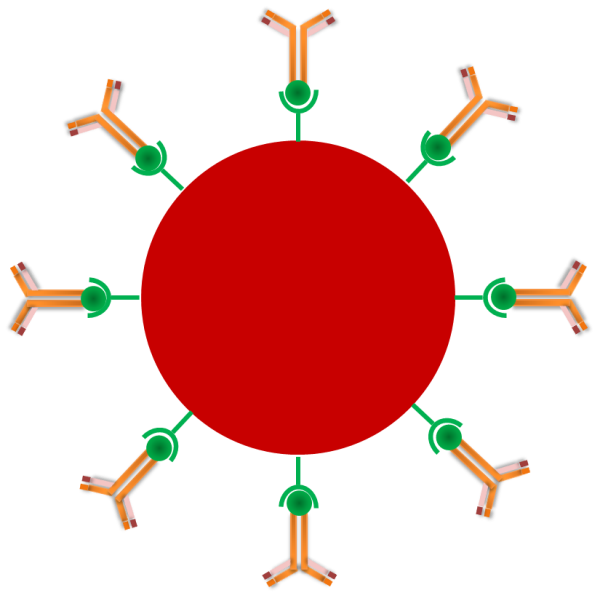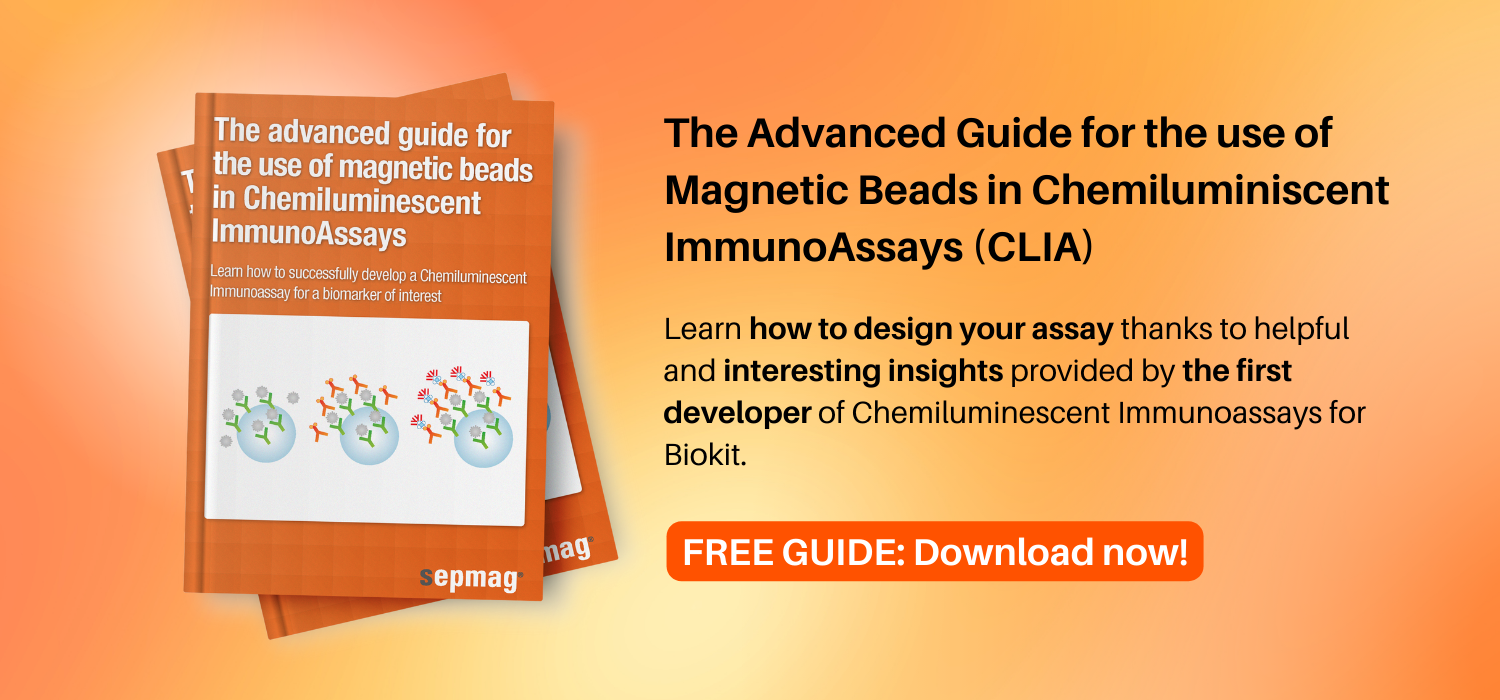This is the last of a series of posts on pros and cons of classical covalent links, which we have been publishing during the last few weeks. This one is about 3 well-known classical covalent links: streptavidin beads, biotin, protein A and protein G.
Magnetic beads are available with a variety of surface coatings. Beads can be endowed with a range of functional groups that enable them to covalently attach a particular molecule. Alternatively, a bead can contain a surface biolink such as streptavidin, biotin, protein A, and protein G. These biolinks have unique and specific properties that govern their use, rendering beads coated with these types of groups suitable for a number of different applications.
This post is about classical covalent links for biomarkers. If you want detailed information about this topic, download our free ebook The Advanced Guide for the use of Magnetic Beads in Chemiluminescent Immunoassays:
The advantages of non-covalent binding of biolinks
Unlike surface functional groups that bind covalently to a protein, biolinks attach molecules in a non-covalent manner that is governed by their affinity for said molecule. Protein A and protein G, for instance, are small proteins originally derived from bacteria. These proteins bind certain immunoglobulins subtypes with a very high degree of affinity. Although each of these two proteins has a unique antibody binding profile, there is some degree of overlap in the antibody fractions that are recognized and bound.
Streptavidin is another small, bacteria-derived protein that is utilized as a biolink on bead coatings. Streptavidin has an extraordinarily high affinity for biotin. The strength of binding between streptavidin and biotin is such that it can withstand high temperatures, a wide range of pH values, variations in buffer salts and the presence of detergents. As such, these links are ideal to use in cases where a sample might require extreme conditions. The biotin-streptavidin link can be disassociated with a short 70ºC incubation without denaturing the streptavidin.
What about their disadvantages?
The disadvantage of working with these biolinks is that there can be issues with non-specific binding. Biotin, on the other hand, is a naturally occurring molecule and, as such, the highly circulating endogenous biotin present in samples may interfere with an assay. Consequently, when working with beads containing surface biolinks, it is important to modify the protocol to minimize the effects of any non-specific binding.
Don't forget to check these posts from our blog in order to get a deeper insight into magnetic particles and immunoassays:
- Using streptavidin magnetic beads in Chemiluminescent Immunoassays
- Pros and Cons of Classical Covalent Links (-COOH, -OH, -NH2)
- Pros and Cons of Classical Covalent Links (Tosyl, Epoxy, Chloromethyl)






